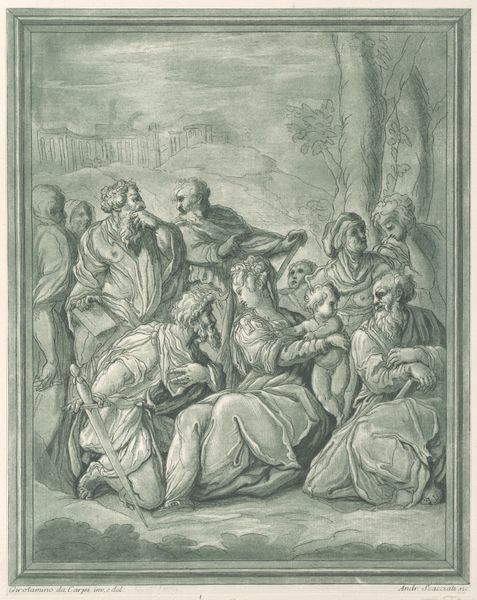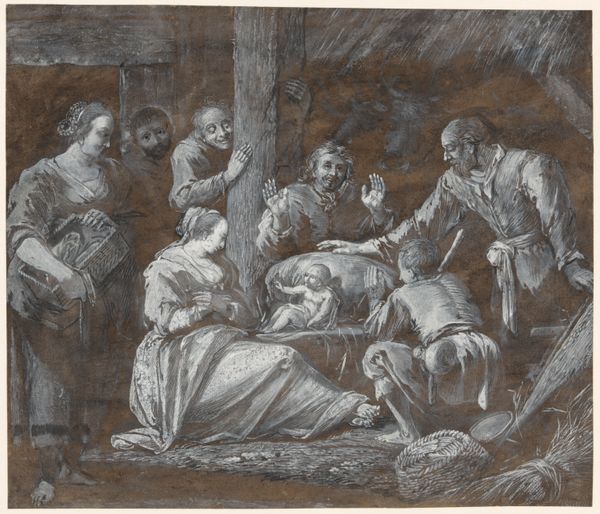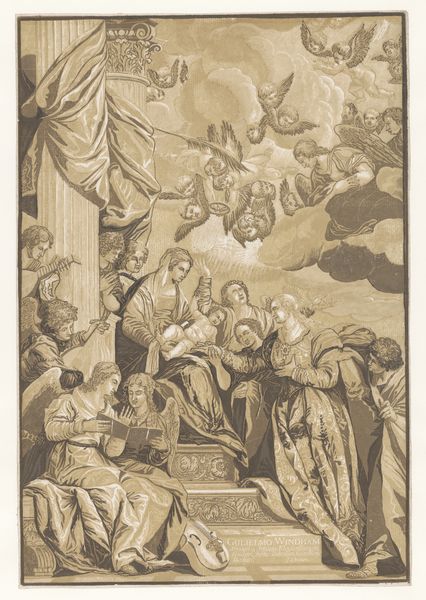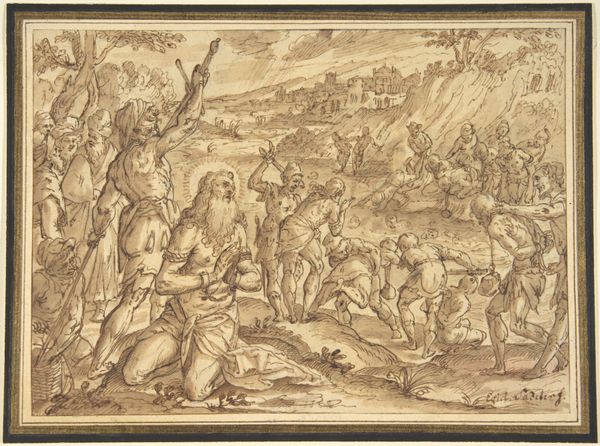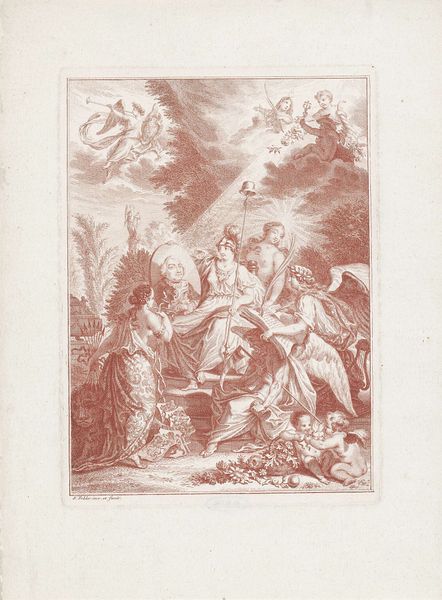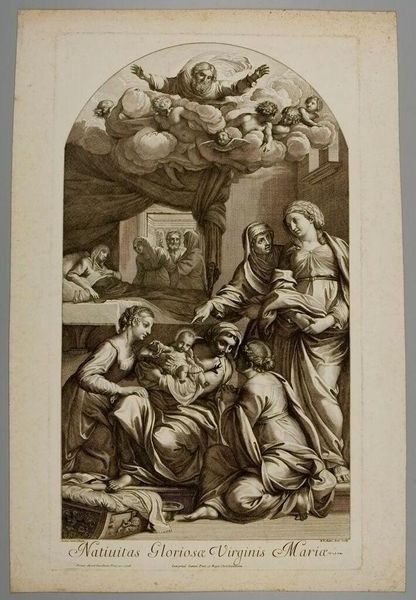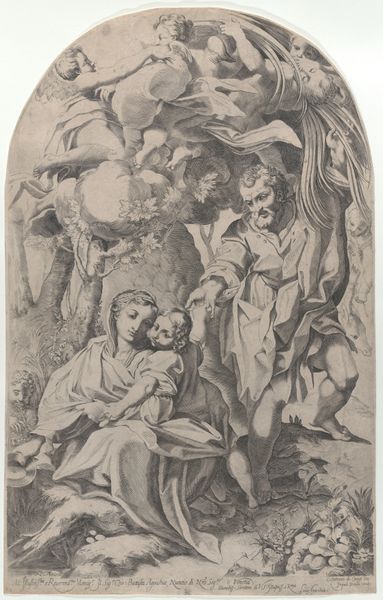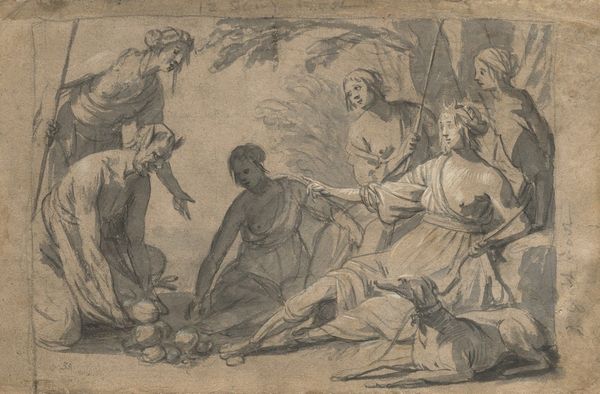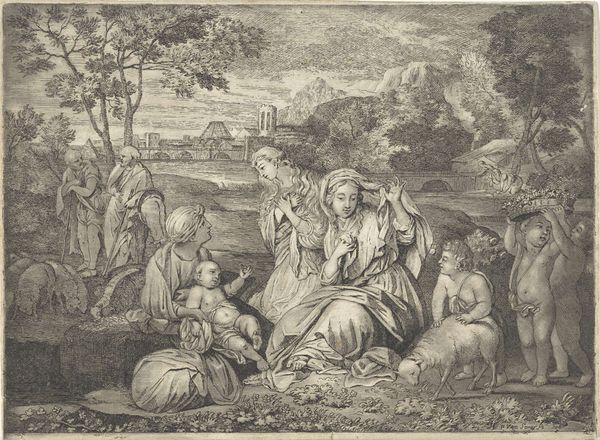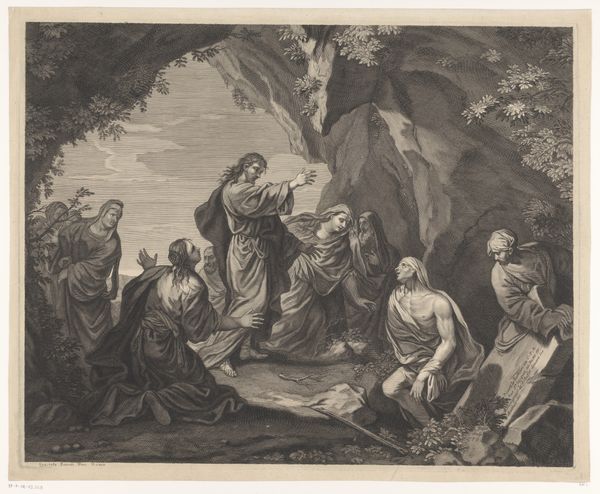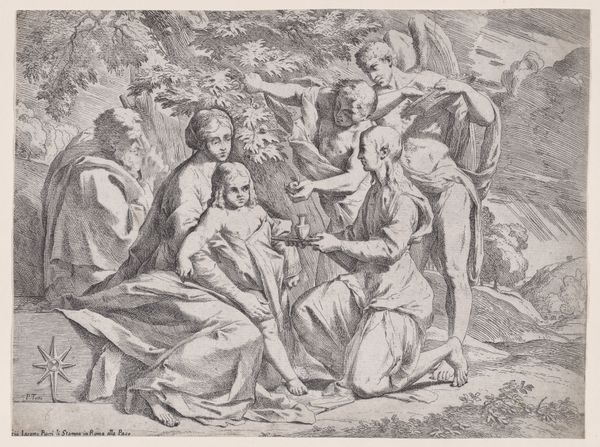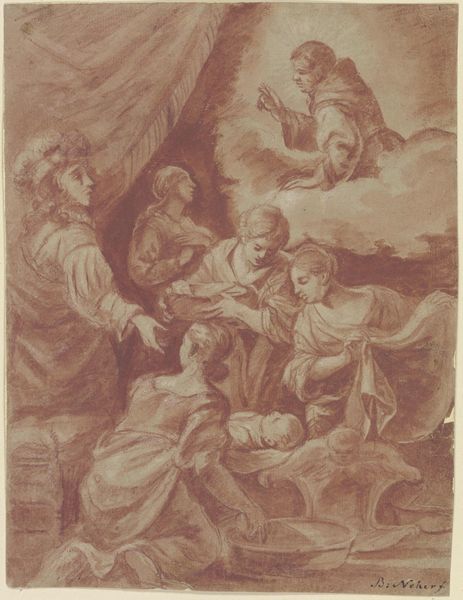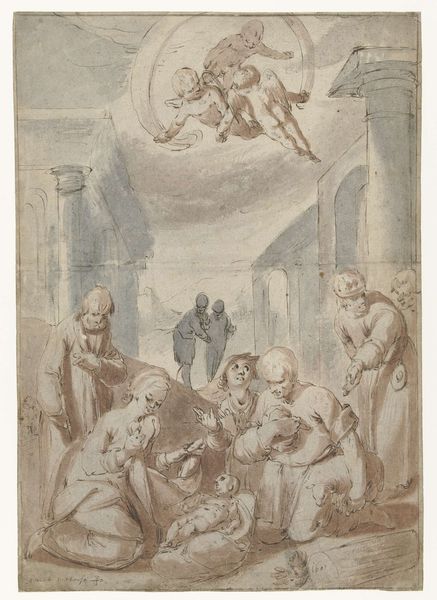
De zilveren beker wordt gevonden in de zak van Benjamin 18th century
0:00
0:00
painting, print, watercolor
#
narrative-art
#
painting
# print
#
figuration
#
watercolor
#
coloured pencil
#
watercolour illustration
#
genre-painting
#
history-painting
#
rococo
Dimensions: height 530 mm, width 776 mm
Copyright: Rijks Museum: Open Domain
Editor: Here we have Giovanni Volpato's 18th-century print, "De zilveren beker wordt gevonden in de zak van Benjamin" which translates to "The silver cup is found in Benjamin's sack." It seems to be rendered in watercolour and ink, giving it a delicate feel, despite the drama unfolding within the scene and an ornate Rococo decorative border. How would you interpret this work? Curator: I see an excellent example of the convergence of art and craft in 18th-century printmaking. Look closely at the methods of production. This isn't just a high art painting, it's a crafted object. Editor: I hadn't considered the "crafted object" element to it before. Curator: Consider the layers involved – the initial engraving, the application of watercolor washes, likely completed with a workshop of assistants. How does the reproductive nature of printmaking alter our understanding of authorship and value? Was the labour distributed, almost like a factory line? Editor: That’s interesting. It makes you wonder who exactly created the finished piece, as we only have one signature on record, yet numerous pairs of hands will have contributed to its fabrication. Also, given its age, who would it be aimed at and how was it sold? Curator: Precisely! Think about its circulation – prints like these made art accessible, but also facilitated the dissemination of narratives and ideologies. We need to examine the work involved at the point of creation but also where its physical existence ended. Was this discarded after use, lovingly cared for and re-used in other craft applications? All of these things leave traces, that if we looked hard enough could be determined. Editor: So, it’s less about the artist's individual genius and more about the entire system of production and consumption? Curator: Absolutely. And the social and economic conditions that made it possible. Let’s not just admire its beauty; let's investigate the means of its creation. Editor: That's a great way to look at it! I'll definitely be considering the production process of artworks much more closely now. Curator: Glad to hear it. Seeing art as a material product shifts the focus and challenges traditional views.
Comments
No comments
Be the first to comment and join the conversation on the ultimate creative platform.
